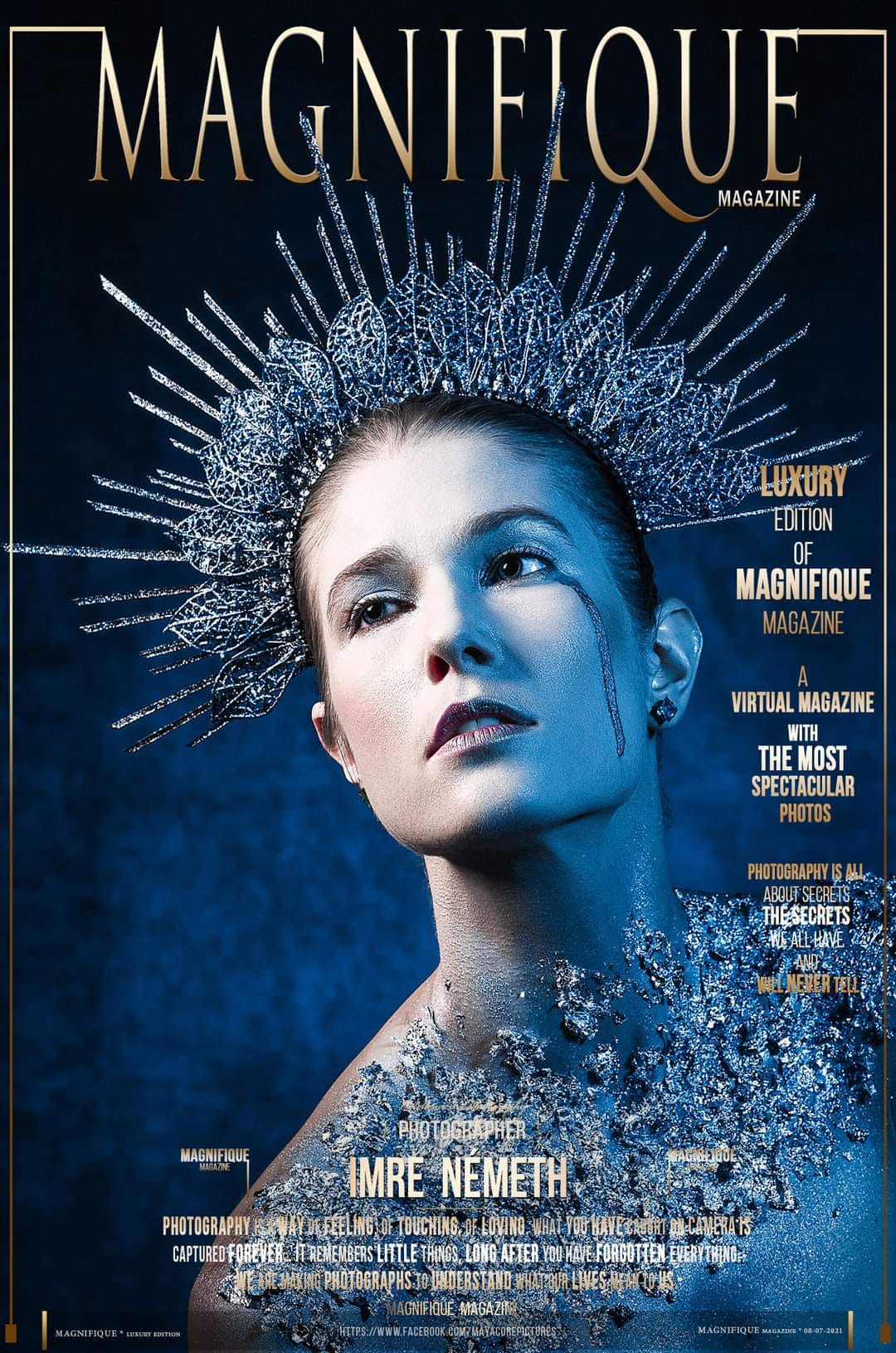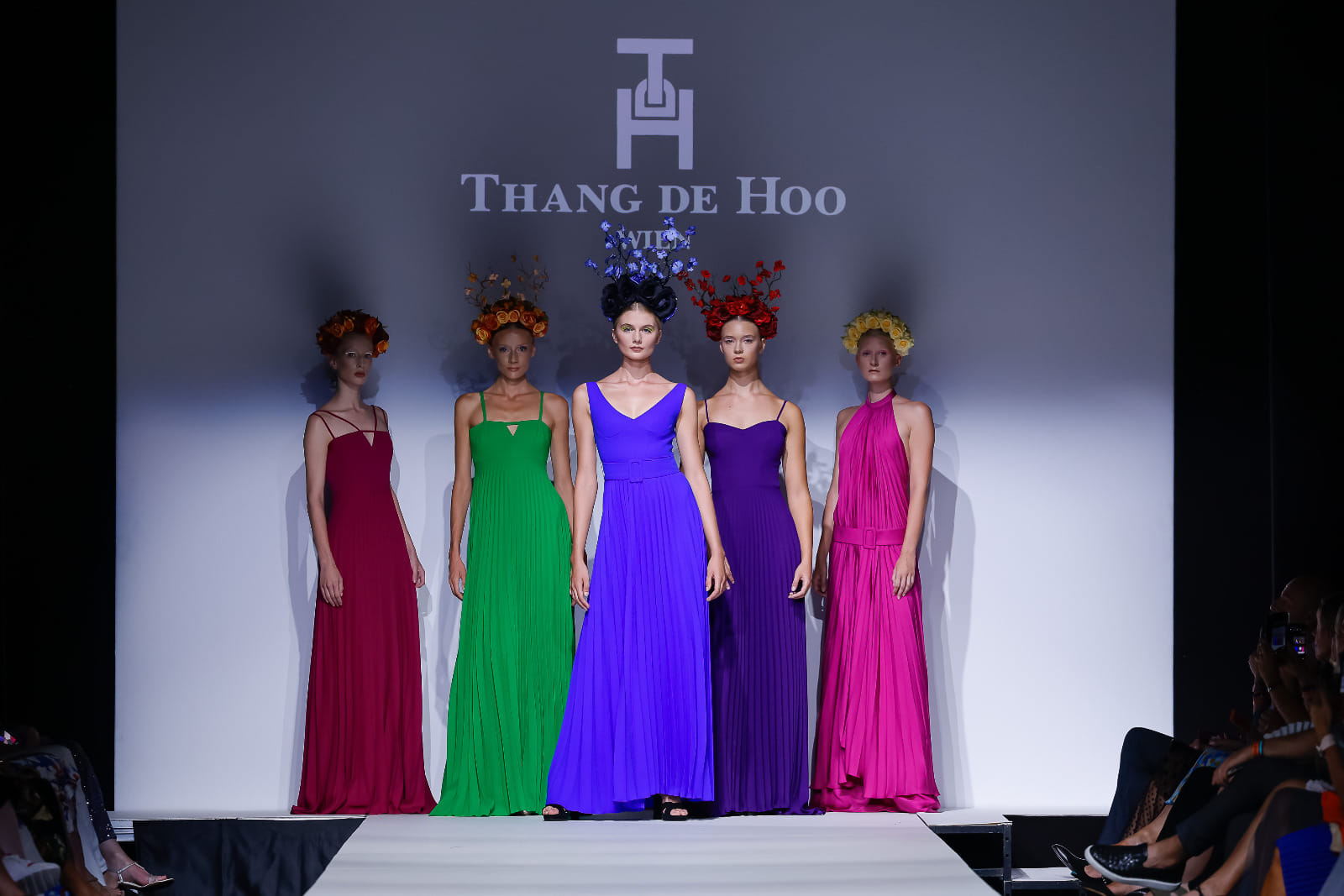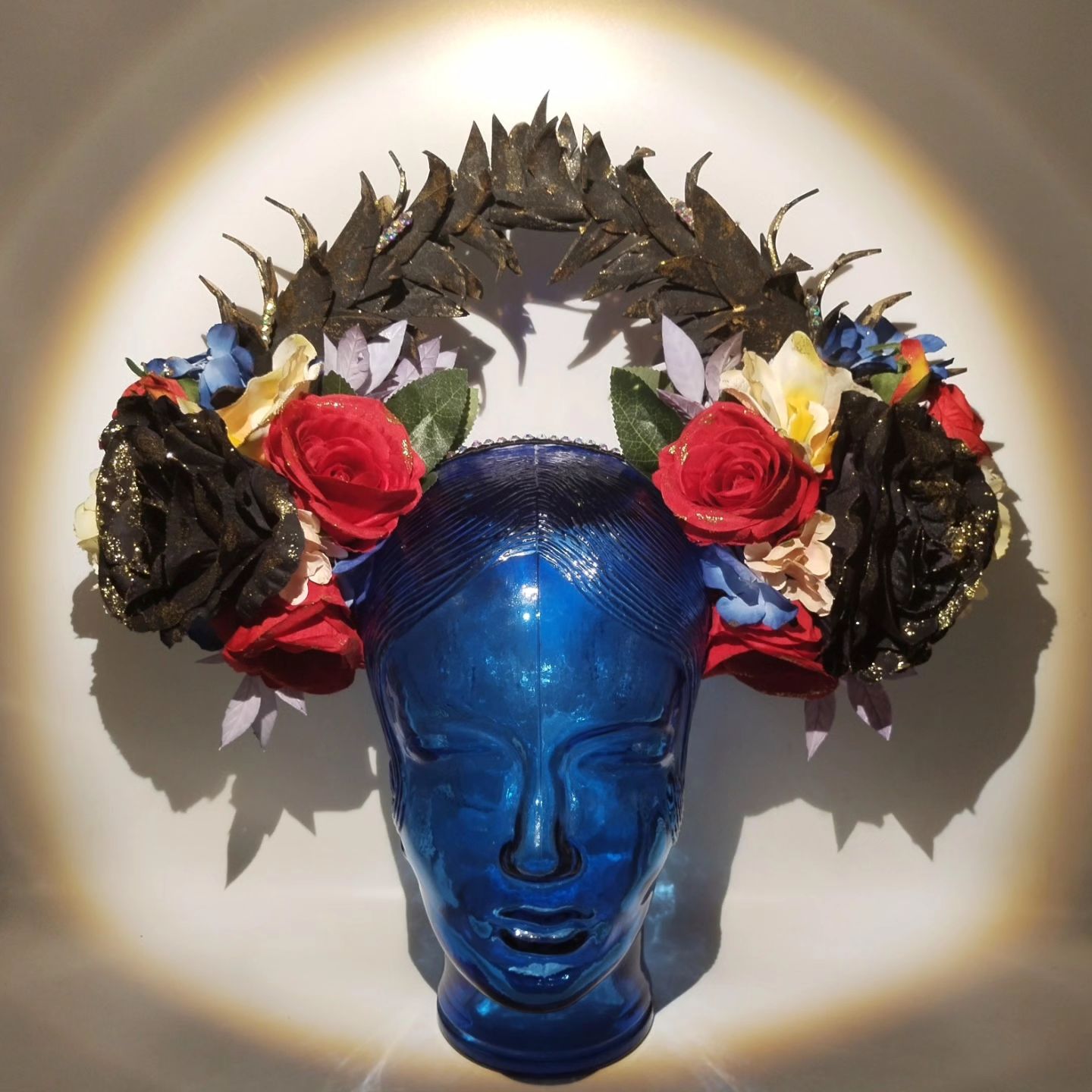Imagine a world where women are deeply respected, special creatures who embody life, magic, healing, dance, earth and love. What do they wear in your imagination? In mine, they are definitely wearing headpieces. So it is in the world of InNirvana Juliana, who not only imagines them, but creates them for us.
Juliana's studio is a starting point for those looking for unique outfits for special events. She herself is definitely a special person, with incredible life experiences that we can take a piece of with us wearing her headpieces.
- Let's start with a game. Imagine you are standing in front of God, who asks you, "Who are you?" What would you answer?
Well, okay, let's play this game. I hope I don't come before God for a while yet, but this is a good time to prepare in advance. We are playing now and I'm using my artistic nickname Juliana InNirvana in this game. First I will say hello to God, you need to remain polite, that’s what my mother taught me. Then I would thank him for this wonderful life. And I would really ask him not to send me back. I don't think this would be a long conversation.
- You are originally from Russia. From where exactly? How did you grow up?
I was born and raised in St. Petersburg, in the Soviet Union. I went to school and went in for sports, in general, like all children.
- How did you get involved in fashion? Did you have a background in the family?
I just want to do it and I see what it should look like. I guess I don’t have a feeling of fear that I won’t succeed. I always say that if this doesn’t work out, then something else always turns out, even more interesting. If you don’t try, you won’t know.
There has always been creativity in my family.
My mother taught me to knit and sew. My younger sister graduated from the University of Design, which, by the way, I did not enter. She made shoes. Now my sister creates tracksuits for gymnastics, aerobics and other sports. She works with many sports teams in Russia.
- What did you learn? Where did you start working?
In high school I learned to knit and sew. Immediately after school I entered a sewing school. I was interested in creating my own clothes. At the same time, I studied at a modeling school and was actively involved in sports. After that, I entered the University of Design and Light Industry, but failed the exam in higher mathematics. Then I entered the Lesgaft Sports Academy. After finishing my studies, I worked as a trainer in fitness clubs for quite a long time.
But I returned to fashion in its various manifestations. For example, I also worked as a model for a famous designer's fashion house in Moscow.
- When did you move from Russia?
My first really serious trip was to London in 2002. Before that, I had only been to the countries of the former Soviet Union and Finland. I liked the city, it has its own unique flavor, but I immediately thought that I didn't want to live in London. I need to see what else there is in this world.
- Where else in the world have you lived? How have these places influenced your work? Which culture is closest to you?
I've traveled a lot, but I think it's better to say about a few of the most interesting trips. I've been in Nigeria, Qatar, Indonesia. The trip that really changed my life was in 2010 - I came to India. It is this country that is deeply rooted in my heart. I returned there for ten years and spend six months there every year. The culture of the east is closer to me.
Budapest, which I couldn't part with
- How long have you lived in Hungary? What attracted you here? And what do you like the most?
I first visited Budapest in the summer of 2013, for just a few days. I really liked the city, and I felt already then that I wanted to live here. I returned already in the spring of 2014 and I realized that I could not part with this city. Every country has its advantages and disadvantages. I have something to compare it with; I have been to many different countries on three continents. I feel at home in Budapest. In principle, I like everything, it’s impossible to single out just one. I can say what I don’t like - the complex bureaucratic system. Receiving any document is completing a quest.
- How did you start making headdresses? What were you doing before? What was your background?
At the beginning, I made clothes, jewelry and bags. I really enjoy making bags and I want to get back to it one day. My sister still uses one of my bags, even though I made this bag twenty years ago.
I've started making headpieces and hats in 2013. At that moment, I traveled a lot to different festivals and saw that a lot of people made their own costumes, but did not pay any attention to headdresses or hats. The costumes looked unfinished. I started working in this direction.
- Russian folk costume is famous for its beautiful headdresses. How does Russian culture influence you?
Yes, Russian national costumes are really very beautiful, but I don’t often turn to this topic. Because I make costumes and headpieces for festivals and fashion shows. And this is a completely different direction.
- What other inspirations do you turn to?
I am inspired by many national costumes around the world. While creating my products I meet people from all over the world. From my travels I often bring interesting details and ideas for my products. I like to reuse items to keep them out of landfills. I also use recycled packaging whenever possible.
Festivals and Carnivals
- Did you have a buyer persona in mind when you launched the brand?
I just wanted to make people more beautiful at festivals. Bring more colors and images to dance floors. I saw people and always knew what images I would like to create for them.
- Who is buying your work now? Where do people wear headdresses?
My headpieces and wings are bought by people all over the world. A lot of my things are at festivals and carnivals. For example, Burning Man, Ozora, Venice Carnival and many others. People also buy my pieces for wedding ceremonies, birthdays and other occasions. I collaborate a lot with photographers in Hungary. My works can be seen on magazine covers. Now I collaborate with fashion designers and create headpieces for fashion shows.
 Photo: Németh Imre - Model: Ana Zemetti - Makeup: Rideg Lívia
Photo: Németh Imre - Model: Ana Zemetti - Makeup: Rideg Lívia
- What materials do you use?
I use many different types of materials. Artificial flowers, plastic, mirrors, paints and rhinestones. I also really love working with recycled items. For example, broken dolls, jewelry, puzzles and much more.
- Do you make sketches, drawings or put it together straight away?
Sometimes, I make sketches if necessary. But mostly not. Sometimes I collect the right parts for a while and only then make a headdress or hat.
 Fotó: @katrinart.pro.photo
Fotó: @katrinart.pro.photo
- What was the longest time you worked on a piece? What took you a long time?
On average, it takes between 3 days and a week to work on a product. But sometimes during the work, I understand that another part needs to be put in and then I put it aside. The creative process is quite unpredictable.
- Which work are you most proud of? And why?
I cannot single out any one of my works. I love them all. The last big work was the head pieces I made for the fashion show in Vienna for the fashion house Thang De Hoo.
 Photo: Thomas Lerch -MQ Vienna Fashion Week
Photo: Thomas Lerch -MQ Vienna Fashion Week
- Do you wear your pieces? What is your personal favourite?
Sometimes, of course, I wear my crowns. This happens at festivals, Halloween or other parties.
My personal favorite is the crown I made at this moment. And now I'm making crowns for the debutante ball in Vienna. That's why favorites change all the time.
- For someone who has never tried anything like a headpiece before, how would you encourage them to do? What can a piece like this add to a woman’s outfit? What events, what adventures can a headpiece inspire?
I can't give any advice. Everyone must decide for himself whether he wants this or not. In any case, need to feel comfortable. I can help to choose a head piece for a specific occasion.
A hundred years ago, going out without a headdress was considered rude and bad manners. Now this tradition has been preserved only at a few events.
 SÜEL Campaign
SÜEL CampaignPhoto: Gregus Máté - Model: Vámosi Viktória - Styling: Somogyvári Edit -Makeup: Lemon Makeup - Hair: Horváth Roland
- Where do you want to see yourself in five years?
In five years, I hope to present my collection at New York Fashion Week.
______
Cover photo:
Winner the 2023 IBI Avards, New York, USA - 1st place
Styling and Photo by: @katiesgarderobe



 Photo: Németh Imre - Model: Ana Zemetti - Makeup: Rideg Lívia
Photo: Németh Imre - Model: Ana Zemetti - Makeup: Rideg Lívia Fotó: @katrinart.pro.photo
Fotó: @katrinart.pro.photo Photo: Thomas Lerch -MQ Vienna Fashion Week
Photo: Thomas Lerch -MQ Vienna Fashion Week SÜEL Campaign
SÜEL Campaign